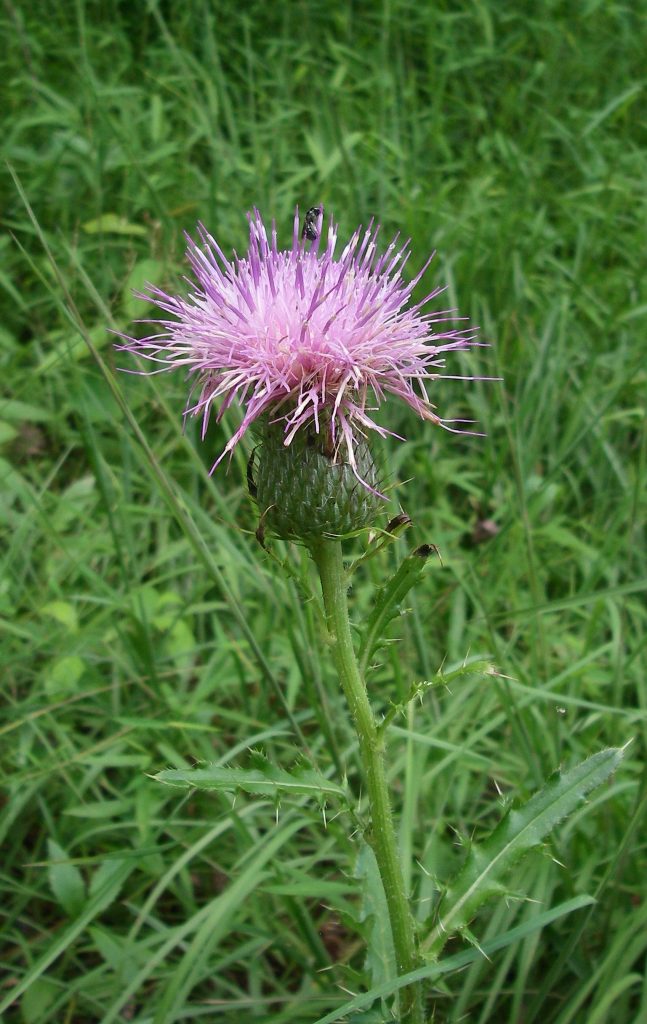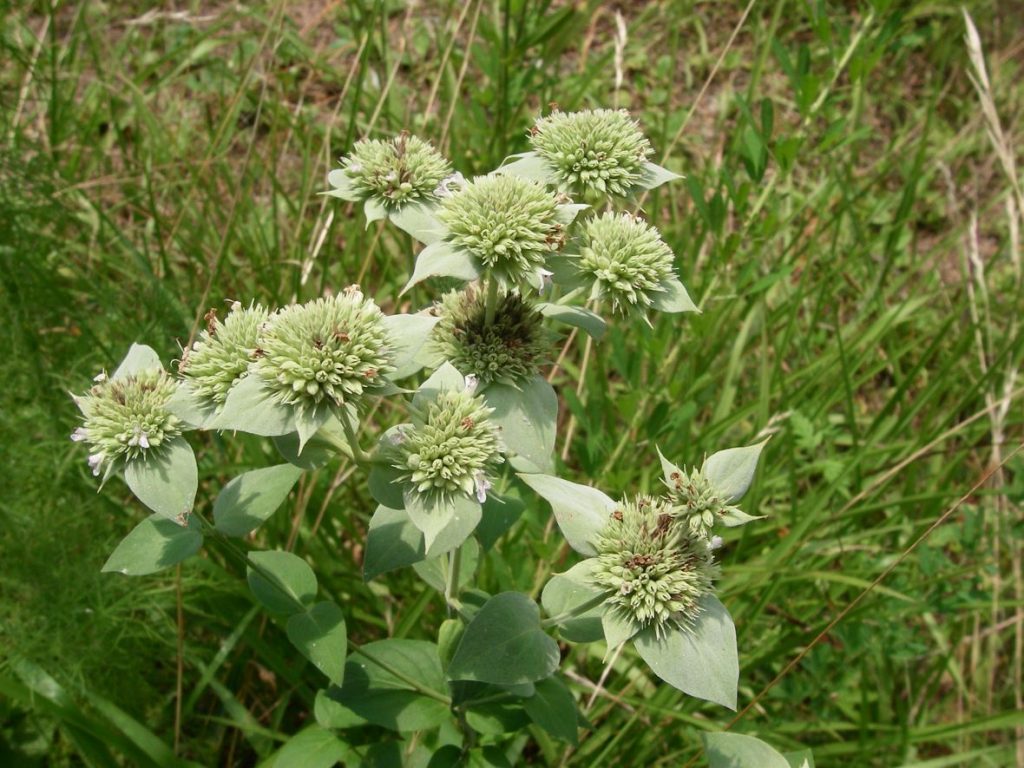 Who doesn’t look forward to the bounty of spring and summer in Delaware – delicious, fresh strawberries, asparagus and tomatoes – to name a few. The production of these First State summer staples is the result of pollination. Plants need pollinators – insects and animals – to produce their fruit, vegetables and nuts. Insects, especially bees, move the pollen from one plant to another allowing them to produce the food we eat.
Who doesn’t look forward to the bounty of spring and summer in Delaware – delicious, fresh strawberries, asparagus and tomatoes – to name a few. The production of these First State summer staples is the result of pollination. Plants need pollinators – insects and animals – to produce their fruit, vegetables and nuts. Insects, especially bees, move the pollen from one plant to another allowing them to produce the food we eat.
In fact, one in three bites of the food we consume comes from a pollinated source, according to the National Wildlife Federation. And the U.S. Department of Agriculture says almost all of the world’s seed plants need to be pollinated. So without pollinators, we humans and all of the earth’s terrestrial ecosystems would not survive.
At the same time, bees and other pollinators are in trouble around the world. The National Park Service reports that pollinators are declining due mainly to habitat loss, competition from invasive species, pesticides, climate change and disease.
So what can we do to help our pollinators? A huge step is to plant a pollinator garden, especially one featuring plants native to Delaware. We asked an expert with the Delaware Department of Natural Resources and Environmental Control how to take the first step. Here is what William McAvoy, a botanist with the DNREC Division of Fish and Wildlife, had to say:
Because insect pollinators are declining due to the use of pesticides and the loss of habitat and their host plants, creating a native plant garden with an emphasis on attracting pollinators will benefit these local populations by providing them with greater opportunities to nectar and reproduce.
 Not only do native plants that attract pollinators provide them with nectar from flowers, but their leafy stems are also places where insects deposit eggs. Once the eggs hatch into caterpillars, the caterpillars will eat the foliage of the plant. The caterpillars also provide food for nesting birds and their young. So native plant gardens that attract pollinators offer broad benefits to local wildlife populations.
Not only do native plants that attract pollinators provide them with nectar from flowers, but their leafy stems are also places where insects deposit eggs. Once the eggs hatch into caterpillars, the caterpillars will eat the foliage of the plant. The caterpillars also provide food for nesting birds and their young. So native plant gardens that attract pollinators offer broad benefits to local wildlife populations.
When creating a pollinator garden using native plants, I recommend that you select species that are indigenous to the state of Delaware. Meaning that these species naturally occur and grow in Delaware’s various native habitats.
You don’t necessarily need a back yard; you can plant any native species in pots on a sunny porch or balcony.
By using indigenous plant species, you will have more success in creating a pollinator garden and attracting a diverse assemblage of insect pollinators. Indigenous species have evolved and are adapted to Delaware’s climate and soils, and the insects that visit these species know them well because they have co-evolved with them.
You do, of course, need to match the species you want to plant with the soils where you plan to create your garden. You don’t want to plant a wetland plant in dry soils or an upland plant in wet soils, for example.
 Many of the native pollinator plants that are offered in nurseries, like butterfly milkweed, require full to partial sun. So find a sunny spot to start your garden. But there are shade-loving native plants that pollinators look for, too, including white wood aster and purple-node Joe Pye weed. These species just may be a bit harder to find in your local nurseries. But you can also try and grow plants yourself – from seed. This way you can get the species you want that will match your soils and exposure perfectly and benefit the pollinators that prefer shade plants.
Many of the native pollinator plants that are offered in nurseries, like butterfly milkweed, require full to partial sun. So find a sunny spot to start your garden. But there are shade-loving native plants that pollinators look for, too, including white wood aster and purple-node Joe Pye weed. These species just may be a bit harder to find in your local nurseries. But you can also try and grow plants yourself – from seed. This way you can get the species you want that will match your soils and exposure perfectly and benefit the pollinators that prefer shade plants.
If you find it difficult to locate native plant species that are indigenous to Delaware in your local nurseries try and select species s that occur within the Mid-Atlantic region, which includes the states of New York, New Jersey, Pennsylvania, Maryland, Virginia and West Virginia. In most cases, species in these states also occur in Delaware.
It is also smart to try and get plants that are grown as locally to Delaware as possible. Plants that are grown in Delaware, or within a 100-mile radius, are more adapted to our climate and will thus be better suited to your garden. To help you find plants that are indigenous to Delaware visit the flora of Delaware website.
 For a pollinator garden, what are the best native species to plant?
For a pollinator garden, what are the best native species to plant?In selecting native pollinator plants for your garden, try and create a mix that blooms from spring through the summer. It’s important to provide a nectar source for insect pollinators throughout the growing season from April through October. Early spring blooming plants are especially important for the pollinators that emerge early in the season when there is not much blooming at that time.
There is a great diversity of plant species that you can select for your pollinator garden, but there are a few families of plants that you should focus on: the pea family (fabaceae), the aster family (asteraceae), the milkweed or dogbane family (apocynaceae), and the mint family (lamiaceae).
Examples of species from these families include:

There are many kinds of creatures in the world that are capable of pollinating plants such as birds and bats, but insects are the most important of all pollinators. The seven main groups of insect pollinators are: bumblebees, solitary bees, wasps, butterflies, moths, flies and beetles.
The colors of flowers, their smell and the nectar they provide are all for one purpose: to entice a pollinator to stop and visit. For a plant to produce seed or fruit, it must first be fertilized, or pollinated. Insect pollinators carry pollen with them as they move from flower to flower. Pollen from one flower’s male part, called the anther, is deposited on another flowers female part, called the stigma. Once the flower is fertilized, it can produce seed.
Not all plants are pollinated by insects; some are pollinated by the wind blowing pollen from one plant to another, or some plants are self-pollinating and are able to pollinate themselves without any help.
When creating a pollinator garden using native plants, non-native species, especially invasive species, should never be considered. However, there are some native species that you may want to avoid, those species that grow very aggressively if given prime growing conditions (i.e., moisture, sun, nutrients and plenty of space).
One of these species that comes to mind is the Canada goldenrod (Solidago canadensis). Though goldenrods area good pollinator plants, this species will take over your garden to the point where not much else will grow.
 Where can you find native plant species?
Where can you find native plant species?Native plants indigenous to Delaware can be found in commercial nurseries, online and at local native plant sales that benefit private conservation organizations such as the Delaware Nature Society. Or, just check with your local nursery.
The best time to start a native plant garden is in the early spring or fall. During these months, you often have rain that plants need to become established and cool temperatures that reduce the amount of stress on young plants that have just been planted.
If you’ve chosen plant species that are suitable for the area you are planting and they are indigenous to Delaware, then maintaining a native pollinator garden should be relatively easy. Weeding out undesirable plant species will always be a chore, but the native plants should be able to compete well with the weeds and watering would only be needed initially while the plants are becoming established.
After that, just wait for the next rain. Don’t clean-up or cut-back your garden until spring. Many of the insects that are utilizing the native plants in your garden are also overwintering in the stems of these same plants.
Related Topics: conservation, education, flora, garden, nature, people, plants, pollinators, science